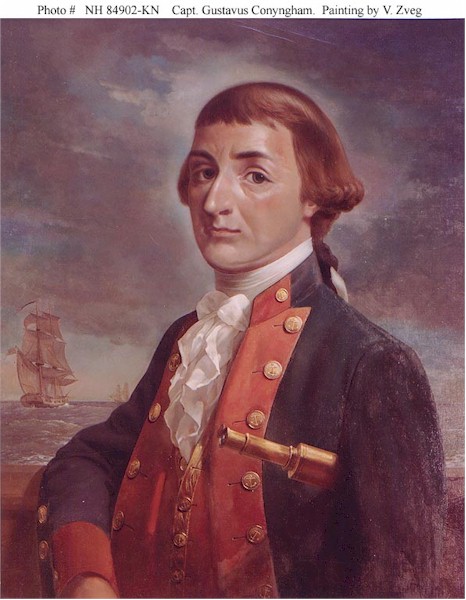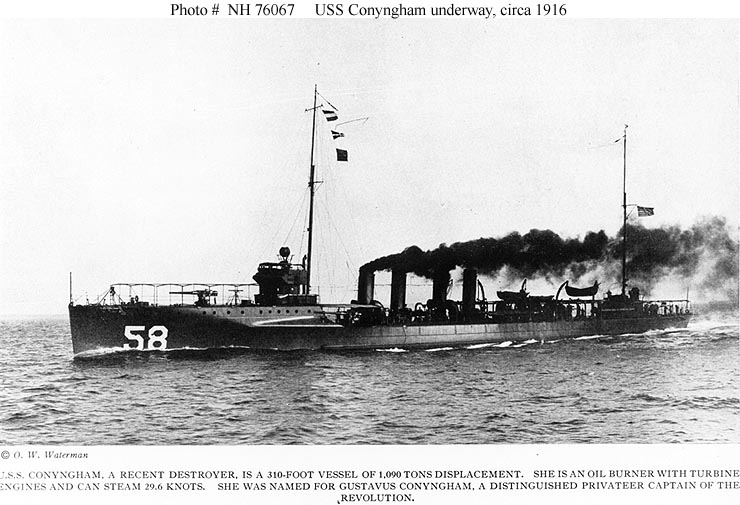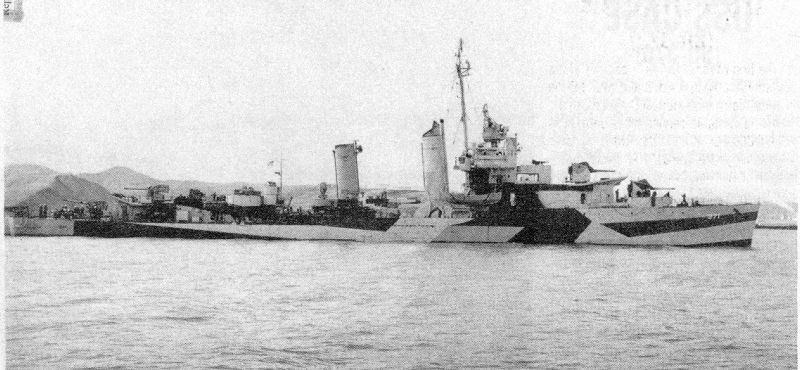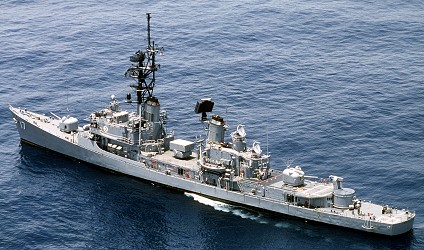Monday Maritime Matters
September 17th, 2007 by xformed

From Wikipedia:
A privateer was a private warship authorized by a country’s government by letters of marque to attack foreign shipping. Strictly, a privateer was only entitled to attack enemy vessels during wartime. However, states often encouraged attacks on opposing powers while at peace, or on neutral vessels during time of war, blurring the line between privateering and piracy.
Privateers were an accepted part of naval warfare from the 16th to the 19th centuries, authorised by all significant naval powers. The costs of commissioning privateers was borne by investors hoping to gain a significant return from prize money earned from enemy merchants.
[…]
Captain Gustavas Conyngham was born in Ireland in 1744. He came to America with his father and settled in Philadelphia, PA before the Revolutionary War. He became a successful privateer captain. From the CONYNGHAM Association page:
[…]
In 1777, the merchant ship he commanded, CHARMING PEGGY, was seized and interned in Europe. He then sought and obtained a Captain’s Commission in the Continental Navy. Operating primarily in British waters, Captain Conyngham proved to be one of the most successful and audacious naval officers in the American Revolution.His first naval command was the 100-ton cutter SURPRISE whose mission was attacking British shipping in the English Channel. After taking numerous prizes, he was given command of the cutter REVENGE which was larger and faster than SURPRISE. He continued to harass British shipping, taking more than 60 prizes in 18 months. Each ship captured was sent into a friendly port and the cargo disposed of in the interest of the revolutionary cause. Historians indicate that the proceeds from these prizes contributed materially to the operations of Benjamin Franklin and his American mission in France.
British influence finally forced the closure of French and Spanish ports to him, so he set sail for the West Indies where he convoyed American shipping in addition to continuing his task of capturing enemy merchant ships.
In 1779, Captain Conyngham returned to Philadelphia, but on his next cruise he was captured and taken prisoner as a privateer. He was interned first in New York and then in London, from where he escaped only to be recaptured while returning to America in 1780. Again, he escaped and was in France, preparing to cruise against the British, when the war ended.
Captain Conyngham returned to the merchant service and commanded the armed brig MARIA during the Quasi-War with France. Later, as a member of the common council of Philadelphia, he assisted in the defense of the city during the War of 1812. Captain Conyngham died on 27 March, 1819 and is buried in St. Peter’s Churchyard in Philadelphia.
Showing how the logistical needs of your enemy can handsomely fund your resistance obviously became a specialty for Captain Conyngham. Consider his first voyage on a 100 ton vessel, harassing British shipping right under the noses of His Royal Majesty’s finest ships and crews. Guts. Lots of them. Oh, and “Prize crews” come from your own hands on deck and ship’s officers…leaving you and the prize ships underhanded. Yet, it appears he made due somehow, probably had frequent port call credits built up in France and our eastern seaboard….
For his daring exploits and contribution to our Nation’s first war, three ships have been named for Gustavas Conyngham:



I sailed in company with USS CONYNGHAM (DDG-17), and my neighbor across the hall at my first apartment, ENS Tom Brubaker, was an officer aboard her. They certainly were a can do ship, with a hard charging captain. From my vantage point on the “fat ship,” I recalled them departing our starbaord side, having just taken three rigs (two fuel, one stores) and within 20 minutes announcing they were ready to take the VERTREP (helicopter delivered vertical replenishment) deliveries. It looked like an ant’s nest of frenzied activity over there, but they had the “git ‘er done” mentality working for them, long before we had heard of Larry the Cable Guy. We often commiserated together about the cost of such a reputation on the crew, but he lived and went on to a career as a civil engineer for the Navy, and I believe he ended up with the SEABEEs. We sailed on a deployment to the Med in 1978, which had both our ships in the Med when the Shah of Iran was overthrown. The USS CONYNGHAM (DDG-17) was also discussed in my post about breakaway music last year.
This entry was posted on Monday, September 17th, 2007 at 7:40 am and is filed under Economics, Geo-Political, History, Maritime Matters, Military, Military History, Navy, Political. You can follow any responses to this entry through the RSS 2.0 feed. Both comments and pings are currently closed.
September 17th, 2007 at 12:49 pm
Ah yes, the Adams class DDG — where I was sentenced as punishment on Day Two of the simulators in TAO class for having started the war on Day one by premeptively shooting down the Bear D before it could finish passing targeting data to the Juliet SSGN. I was the BG TAO and determined NOT to take the first hit. Learned first hand how life fighting an AAW battle in the NorLant via Link-14 was…not fun.
– SJS
P.S. Still got a sotto voce ‘well done’ from the instructor even as I was being sentenced to Purgatory…
September 17th, 2007 at 10:29 pm
Wasn’t CONYNGHAM the DDG that had to be paid off on short notice after a disastrous main space fire started by an improperly maintained fuel oil strainer? Or am I thinking of another ship?
December 25th, 2007 at 7:26 am
Hello from the US – Tooo true (s CHAOS!). Well done article, I hope it gets picked up on the internet more and more. FYI, I found you quite by accident while searching on \’Pass Random Drug Test\’. I feel lucky to have found your Blog. Keep thinking and posting!